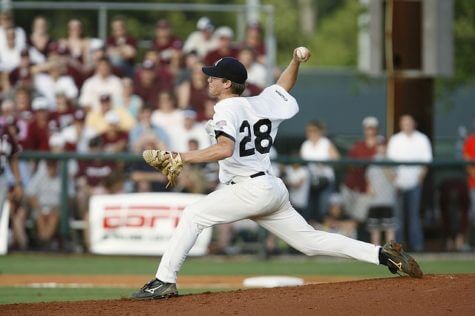BOSTON — If you’ve ever thrown a baseball with the intention of getting a hitter to not crush the ball, you know that visualizing the perfect pitch and making it happen are two wildly different things. Now scientists may have found the most optimal way to toss an object at a target.
The act of throwing objects with any kind of accuracy is one of the most complex actions the human body can perform. Even tossing a crumpled piece of paper two feet into a low wastepaper basket requires a series of instant mathematical calculations and neurological processes your body attempt to make for you.
Researchers at Harvard’s School of Engineering and Applied Sciences (SEAS) wanted to learn the best strategy for consistently hitting a target with a thrown object. They wanted to learn the science behind the perfect throw.

“There are many different ways to get an object to a target,” says professor L. Mahadevan, senior author of the study, in a release. “How do you choose? Our hypothesis was that you choose based on a strategy that minimizes the error at the target while giving yourself the greatest room for error at the release.”
The study found that, in general, overhand throws are more accurate for targets below the shoulder, and underhand throws are more accurate for targets above the shoulder. So when an NBA player struggles from the free-throw line, perhaps the coach should instruct him to perform a “granny shot” for better success. It’s the tactic that NBA Hall of Famer Rick Barry used to sink 89.3% of his free throws.
The researchers analyzed how people make mistakes at their release point, causing inaccurate throws, and the tradeoff between velocity and accuracy. They found that the object needs to be going slightly faster than the minimum required to reach a given target to be consistently accurate. Throwing overhand, the researchers say, is more accurate than underhand for most targets when tossing an object at a high speed and across a long distance.
“This research demonstrates the theoretically best way to throw. But most of us are not born throwers of anything. We learn how to throw through trial and error,” says Mahadevan. “Now, we have a mathematical framework to think about how learning about the physical world requires interacting with the world. We can’t think about tasks unless we think about the way in which we interact with the physicality of the environment.”
The art of the throw is central to humans’ evolutionary development. Without natural weapons like claws or sharp teeth, the ability to accurately throw a spear was key to survival.
The full study was published in April 2017 in the journal Royal Society Open Science.

Comments
Comments are closed.